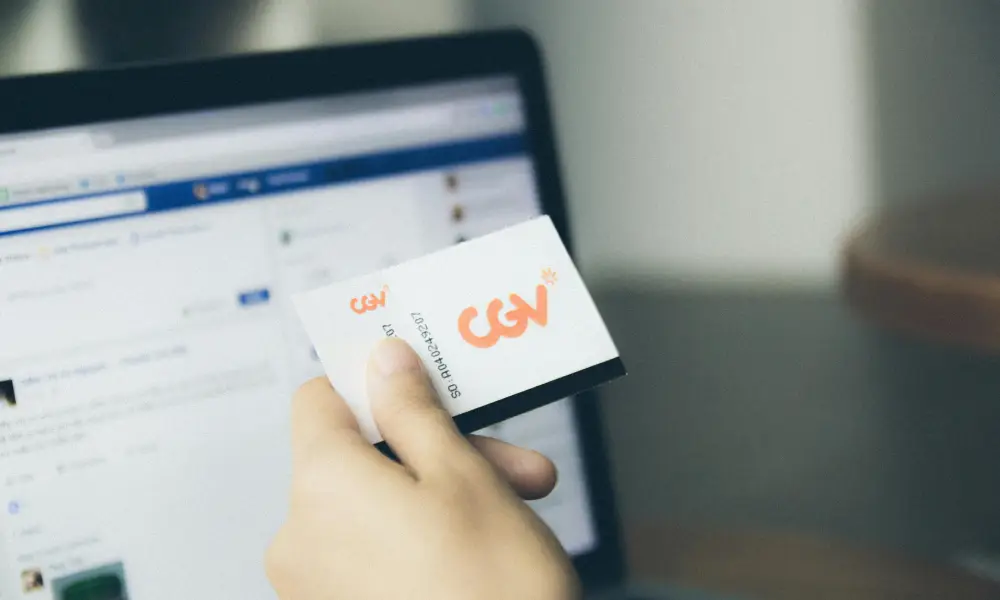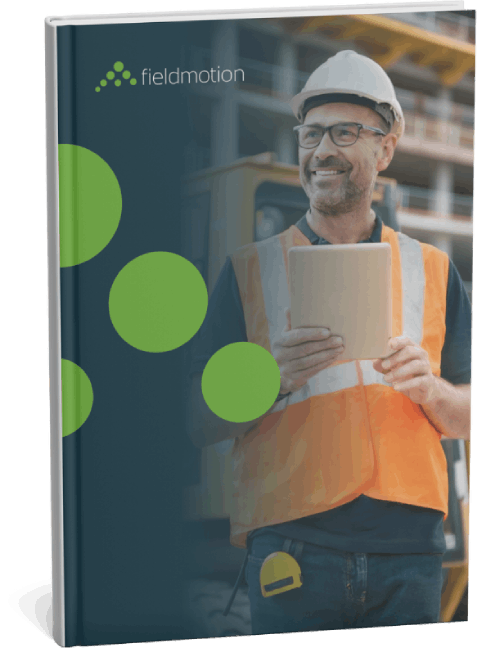Word of mouth will always matter in field service, but a lot of those conversations have moved online. These days, before someone picks up the phone to call a plumber or book an inspection, they’re usually checking out Facebook or Instagram first. They’re looking for reviews, photos of past jobs, and signs that the business is trustworthy.
For small service companies, that online presence can be the difference between a steady stream of leads or a slow month. Facebook Ads — now rolled into Meta’s full ad platform — are still one of the most cost-effective ways to reach local customers. And the best part? You don’t need a huge budget or fancy setup. If you’ve got a defined service area and a few great photos, you’re already off to a good start.
A recent study from HubSpot found that over 70% of small businesses using paid social ads saw real growth in leads. Meta also reports that local service ads tend to get some of the highest engagement on their platform.
Whether you’re a landscaper, electrician, pest control expert or anything in between, Meta’s ads give you the ability to target people in your area, control your spend, and speak directly to the folks most likely to need your service.
Table of Contents:
- Understanding How Meta Ads Actually Work
- Get the Basics Right Before You Start Advertising
- Choosing the Right Type of Campaign
- How to Target Local Leads the Smart Way
- Writing Facebook Ad Copy That Actually Gets Results
- Choosing Photos and Videos That Build Trust
- Setting Budgets and Managing Your Spend
- Following Up with Leads Quickly
- Common Meta Ads Mistakes (and How to Avoid Them)
- Tips to Get Even Better Results from Meta Ads
- Turning Facebook Leads into Long-Term Customers
- Where to Learn More

Understanding How Meta Ads Actually Work
Meta’s ad system is powerful because it doesn’t just rely on age or location — it learns from user behaviour. When you set up a campaign, you pick an objective, which tells Facebook what kind of result you want. That’s how it knows who to show your ads to.
For field service businesses, the most effective campaign types tend to be:
-
Lead generation: Lets people fill out a form right inside Facebook or Instagram without leaving the app.
-
Messages: Sends people directly into a chat on Messenger, WhatsApp or Instagram. Great for fast quotes or job enquiries.
-
Traffic or conversions: Best for businesses with a solid website or booking page.
That objective you choose makes a big difference. If you choose “Lead Generation,” for example, Meta will look for users who tend to complete forms — not just people who might click your ad out of curiosity.
There’s also something called the learning phase. In the first 5 to 7 days, Meta’s system tests out different audiences, placements and creative combinations to see what works. Results can jump around a bit at first. That’s normal. Try not to make changes too soon. Once the campaign collects around 50 conversions, it settles down and starts performing more steadily.
Quick tip: Meta’s Advertiser Success Centre is a great place to start. It’s packed with templates, setup tips and industry examples that are actually useful for trades and local services.
Fieldmotion Brochure
See how Fieldmotion helps field service teams manage jobs, schedule staff, create invoices, and communicate with customers — all from one easy-to-use system.
Get the Basics Right Before You Start Advertising
Before you run any ads, take a minute to make sure everything else is ready. When someone sees your ad, one of the first things they’ll do is click through to your profile or website. If your Facebook page looks half-finished or your site is clunky on a phone, they might not stick around.
Here’s what to check first:
a) Optimise Your Facebook and Instagram Profiles
This doesn’t have to take long, but it makes a big difference in how professional your business looks.
-
Use your actual business name, not a personal profile or a nickname.
-
Upload a clean logo and a decent cover photo. Even a shot of your branded van will do the trick.
-
Make sure your contact details, service area, and business hours are all filled out.
-
Add a few posts with real content — before-and-after photos, short videos, or testimonials from happy customers.
You don’t need to post every day, but having a few solid posts shows that your business is active and trustworthy.
b) Sort Out Your Website or Booking Page
Your ad will only perform as well as the page it leads to. Whether that’s your homepage, a contact form, or a landing page, it needs to work — especially on mobile.
Make sure your page:
-
Loads quickly on phones and tablets. Most people will click from their mobile.
-
Has a clear call to action — like “Call Now” or “Get a Quote.”
-
Shows off your best reviews or recent jobs.
-
Uses your brand colours and tone so customers know they’re in the right place.
If your page looks totally different from the ad, it can confuse people and lower your chances of getting the lead.
Helpful reads: HubSpot’s “Landing Page Best Practices” shows how simple changes — like adding trust badges or testimonials — can boost conversion rates by up to 30%.
c) Set Up Meta’s Business Tools
To properly track and improve your ads, you’ll want to connect a few key tools:
-
Meta Business Suite: Helps you manage both your Facebook and Instagram accounts from one place.
-
Ads Manager: Where you’ll actually build and monitor your ad campaigns.
-
Meta Pixel (or Conversion API): Tracks actions like quote requests, form submissions, or bookings on your site.
These tools show you which ads are bringing in real leads — not just clicks. That’s essential if you want to get better results over time.

Choosing the Right Type of Campaign
Once your pages and tools are set up, the next big step is choosing the campaign type that suits your goals. Meta gives you a few different options, each designed for a different kind of customer interaction — from raising awareness to collecting direct leads.
Here’s how to pick the one that fits your business best:
a) Lead Form Ads — Quick, Simple, and Effective
If your goal is to get people to request a quote or a callback without leaving Facebook or Instagram, lead form ads are ideal.
Why it works: The form opens right in the app and auto-fills things like name and email using the customer’s existing info. That makes it super easy for them and leads to more completions.
Tips for getting better results:
-
Keep the form short — just ask for the essentials: name, phone number, service needed, and location.
-
Add one qualifying question like “When do you need the work done?” to help filter urgent jobs.
-
Use the “higher intent” setting, which adds a quick review screen before submission. This helps cut down on junk leads.
b) Click-to-Message Ads — Ideal for Fast Quotes
If your business thrives on same-day bookings or quick responses, these ads are a great choice. When someone taps the ad, it opens a conversation in Messenger, WhatsApp, or Instagram DM — wherever you set it to go.
Why it works: Most people already use these apps all day, so it feels natural. They can ask questions or get prices without having to fill out a form.
Tips:
-
Set up an auto-greeting like: “Hi there! Thanks for reaching out to [Your Business Name]. How can we help today?”
-
Add quick-reply buttons such as “Get a Quote,” “Book a Call-Out,” or “See Prices.”
-
Respond as soon as possible. Meta data shows leads start to go cold after just 30 minutes.
c) Conversion Ads — Best for Businesses with a Strong Website
If your website is already in good shape and has a clear booking form, a conversion campaign could give you the best results. Meta will show your ad to people who are most likely to take action — like filling in a form or clicking “Call Now.”
Why it works: You’re targeting people who are ready to do something, not just scroll.
Tips:
-
Make sure your Meta Pixel is installed and working properly so it can track actions like form submissions.
-
Keep your landing page consistent with the ad. If your ad talks about “Fast Boiler Repairs,” don’t send them to a generic homepage.
-
Always show a phone number — some people still prefer calling over filling out forms.
Extra tip: Meta’s “Lead Generation for Service Businesses” guide walks you through setup step-by-step and includes industry-specific cost-per-lead averages. Worth a look.

How to Target Local Leads the Smart Way
You don’t need to advertise nationwide. Most field service businesses only need to reach people nearby — and that’s where Meta’s location tools really shine. With the right settings, you can put your ads in front of the right people in the right place, without wasting money.
a) Geo-Targeting: Keep It Local and Specific
Start by narrowing your audience to where you actually work. Don’t cast the net too wide — you’ll just end up paying for views from people you’ll never serve.
-
Choose “People living in this location” rather than “People recently in this location” to avoid targeting tourists or people just passing through.
-
Start with a 10–20 mile radius around your office, depot, or main service area.
-
If you cover multiple towns, split them into separate ad sets. That way, you can tweak the copy to match each area. For example:
-
“Boiler Repairs in Newry”
-
“24-Hour Electricians in Belfast”
-
This makes your ads feel more local and relevant.
b) Add Smart Audience Layers
Once you’ve sorted your location, you can go a step further and refine your audience using things like age and interests. This is especially useful for trades where the decision-makers are usually homeowners.
-
Use age ranges like 30 to 65+ to focus on homeowners rather than students or renters.
-
Add interests such as “Home improvement,” “DIY,” or “Property maintenance.”
-
Set up retargeting groups — people who’ve already visited your website or engaged with your Facebook page.
This gives your ads a better chance of reaching the people most likely to hire you.
c) Retargeting and Lookalike Audiences
Retargeting lets you show ads to people who already know who you are. Maybe they visited your website but didn’t make an enquiry — this gives you a second chance to convert them.
Lookalikes are great for finding new people similar to your best customers. Upload a list of past clients and Meta will find others with similar online behaviour in your area.
Pro tip: According to HubSpot’s data, field service businesses that use retargeting often see their cost per lead drop by 30–40% compared to those that don’t.

Writing Facebook Ad Copy That Actually Gets Results
Photos and videos grab attention, but your words are what get people to click or message. The best ad copy is short, clear, and sounds like a real person talking — not a marketing robot.
Here’s a simple structure to follow when writing your ad text:
The Four-Part Framework
1. Hook: Start with a problem or frustration your customer might be dealing with.
2. Value: Explain how your service solves that problem.
3. Proof: Show you’re trustworthy — mention reviews, ratings, or years of experience.
4. Action: Tell them what to do next — whether that’s calling, messaging, or clicking.
Real Ad Copy Examples
🔧 Emergency Plumbing
Headline: Burst pipe? We’re here 24/7 🚰
Text: Fast, reliable plumbers covering all of Belfast. Same-day call-outs and 5-star rated by locals.
CTA: Tap “Get Quote” for urgent help today.
🌿 Landscaping & Garden Makeovers
Headline: Ready to transform your garden this spring? 🌱
Text: Lawn care, garden clean-ups, and full redesigns. Serving Cork and nearby areas. Free quotes available.
CTA: Tap “Send Message” to book.
⚡ Electrical Safety Checks
Headline: Keep your home safe with certified electricians
Text: NICEIC-approved experts in Dublin offering inspections, rewiring, and compliance reports. Transparent pricing.
CTA: Click “Learn More” to schedule yours.
Ad Copy Tips That Make a Difference
-
Mention your location. People trust businesses nearby.
-
Use social proof. Even something like “Rated 4.9★ by over 300 local customers” goes a long way.
-
Make your call to action clear. Use the same wording in your button, headline, and text so it feels consistent.
-
Don’t overdo the emojis. One or two can make text more readable — just keep it professional.
Helpful tools: HubSpot’s Facebook Ad Copywriting Guide is a great place to find real-world inspiration.
Choosing Photos and Videos That Build Trust
When it comes to Facebook Ads, your visuals do most of the heavy lifting. Meta’s own research shows that over half of an ad’s success comes from the creative itself — not the targeting or budget. And in field service, real and relatable images work far better than anything too polished.
What Kind of Visuals Actually Work?
Here’s what tends to perform best for trades and local service businesses:
-
Photos of real people doing real work. Show your team on the job, using tools, or interacting with customers.
-
Quick, honest videos. A 10–20 second clip showing a before-and-after, or even a friendly “Hi, here’s what we do” video, builds trust.
-
Customer testimonials. A short video of a happy client saying, “They fixed our boiler same day” is more convincing than any slogan.
-
Problem–solution images. Start with the issue (blocked drain, messy garden) and then show the result.
Avoid using generic stock photos — people can spot them instantly, and they tend to reduce trust.
Simple Checklist Before You Hit Publish
Make sure your ad visuals tick these boxes:
| ✅ What to Include | Why It Matters |
|---|---|
| Your logo in a corner | Helps with brand recall |
| Text overlay with your offer or service | Gets your message across instantly |
| Your location (e.g. “Serving Galway”) | Makes the ad feel local |
| Clear CTA (e.g. “Get a Quote Today”) | Encourages clicks, even if sound is off |
| A human element (smiling tech, handshake) | Builds trust and approachability |
| Good lighting and framing | Makes sure it looks clean on mobile |
| Captions if there’s any voiceover | 85% of users watch without sound |
Tools to Make It Easier
If design isn’t your thing, no worries. Platforms like Canva for Business offer templates already sized for Facebook and Instagram ads. You can drop in your photos, add your text, and publish in minutes — no fancy software or design skills needed.

Setting Budgets and Managing Your Spend
You don’t need a massive marketing budget to run successful Meta Ads. In fact, many local service businesses start with just £10 to £20 a day and still get solid results. The key is knowing where that money’s going and making small adjustments as you go.
Where to Start
If this is your first time running ads, here’s a good starting point:
-
Start with £10–£20 per day on a single campaign
-
Let it run for 7 to 10 days before making changes
-
Expect a cost per lead anywhere from £10 to £40, depending on your service and area
These numbers can vary, but it gives you a ballpark to work with.
Tips for Getting the Most from Your Budget
-
Don’t tweak too early. Making changes in the first few days resets Meta’s learning phase. Let the ad run long enough to gather useful data.
-
Duplicate winning ads. If something’s working well, make a copy and try small tweaks — don’t edit the original.
-
Use Campaign Budget Optimisation (CBO). This setting allows Meta to automatically shift your budget toward the ad sets that are performing best.
-
Check your metrics weekly. Focus on your Cost Per Lead, Click-Through Rate (CTR), and how many of those leads actually convert into jobs.
According to HubSpot’s 2025 benchmarks, businesses using CBO tend to see about 22% better ROI than those managing each ad set manually.
![]()
Following Up with Leads Quickly
Getting leads is only half the job. To actually turn those clicks into bookings, you need to respond fast — really fast. Meta’s own research shows that replying within 10 minutes can increase your chances of converting a lead by up to 80%.
That first reply matters more than you might think. People move on quickly, especially if they’re shopping around for the same-day help many field service businesses offer.
Best Practices for Quick Follow-Ups
-
Use instant replies on Messenger or WhatsApp. A simple “Thanks for your message — we’ll be in touch within 10 minutes” keeps the conversation warm.
-
Use a CRM like Fieldmotion to capture leads automatically, assign them to the right person, and track every interaction.
-
Send follow-up messages via SMS or email. A short thank-you and a reminder of your quote helps keep your business top of mind.
-
Track each lead through to job completion. This helps you figure out which ads are attracting high-value customers, and which ones need tweaking.
If you’re fast, clear, and professional in those first few minutes, you’ll stand out from the competition — especially if they’re slow to reply or don’t follow up at all.
Common Meta Ads Mistakes (and How to Avoid Them)
Even with a great service and decent ad setup, it’s easy to fall into traps that waste your budget or drag down your results. The good news? Most of these mistakes are easy to avoid once you know what to look for.
Mistakes That Can Hurt Your Campaigns
1. Targeting too wide an area
Trying to cover too much ground often leads to wasted spend. Keep your focus local. Stick to areas where you actually take jobs.
2. Using stock photos
Generic images feel cold and impersonal. Real photos of your team or work build trust and get better engagement.
3. Cramming in too much text
Facebook doesn’t like ad images that are covered in writing. Keep your visuals clean and use the caption space for your main message.
4. Stopping ads too soon
If you turn your ad off before it finishes learning (usually 5–7 days), you won’t see accurate results. Give it time to settle.
5. Ignoring your Pixel or conversion tracking
Without tracking in place, you won’t know which ads are driving real leads or just clicks. You need this data to improve performance.
6. Not testing different creatives
If you’re running the same image or headline every time, you’re missing out. Always test at least two versions side by side to see what works best.
7. Neglecting your comments section
People do read the comments, especially on ads. If someone asks a question or leaves feedback and no one replies, it doesn’t look great. Treat comments like customer service.

Tips to Get Even Better Results from Meta Ads
Once you’ve got the basics working — solid targeting, strong visuals, and fast follow-ups — there are a few extra strategies that can take your results to the next level. These small tweaks often make a big impact, especially in competitive local markets.
a) Run Ads During Peak Hours
Most homeowners and customers scroll social media in the early morning (7–10 a.m.) or evenings (6–9 p.m.). Schedule your ads to show more heavily during these times to catch people when they’re most likely to call or message.
b) Refresh Creatives Every Few Weeks
Even the best ad will stop working if it runs too long. After 4 to 6 weeks, most people who were going to respond already have. Swap out your image, update the headline, or test a different angle to keep things fresh.
c) Use Social Proof in Your Ads
If you’ve got great Google or Facebook reviews, take a screenshot and include it right in your ad. Real feedback from real customers builds trust quickly — even more than a polished logo or slogan.
d) Combine Audience Interests
If you’re using interest-based targeting, try stacking a few relevant groups together. For example, homeowners + home improvement + local community pages. This keeps your targeting focused while giving Meta enough data to work with.
e) Track Where Every Lead Comes From
Use UTM links or dedicated phone numbers for different campaigns. This lets you see which ad, audience, or location is bringing in the best quality leads — not just the cheapest clicks.
Turning Facebook Leads into Long-Term Customers
Getting the lead is great, but the real win is turning that lead into a loyal customer — someone who comes back, leaves a review, or recommends you to others.
The goal isn’t just to fill your calendar this week. You want to build relationships that last.
Here’s How to Make That Happen
Follow up personally
A short, friendly text or phone call within 24 hours of someone enquiring shows you care. It builds trust and starts the relationship on the right foot.
Stay visible after the job
Add new customers to your retargeting audience so they keep seeing your brand. You’ll stay top of mind for future work or referrals.
Ask for a review after each job
It only takes a minute, and it helps future ads convert better. People are far more likely to trust a business with regular, recent reviews.
Share your success stories
Post photos of completed jobs, team shoutouts, or customer testimonials on your Facebook page. When people see real work and happy clients, it nudges them closer to booking.
The best Facebook ads do more than drive traffic. They start conversations and create the kind of trust that leads to long-term growth. Every job you land through Meta Ads is an opportunity to build something bigger — a reputation, a brand, and a steady stream of referrals.
Where to Learn More
Meta Ads are still one of the best ways for local service businesses to get leads — especially if you’re focused, consistent, and clear about who you want to reach. When your targeting is tight, your visuals are real, and your follow-up is fast, you’ve got a recipe for steady, reliable growth.
You don’t need a massive budget or a marketing degree. You just need to:
-
Set up your profiles properly
-
Use real photos of your work
-
Run simple, well-timed ads
-
Follow up quickly with leads
-
Keep testing what works and what doesn’t
If you treat it like part of your business — not just a one-off experiment — it can become one of your most valuable tools for finding new customers.
Want to Dive Deeper? Start Here:
- Meta for Business – Advertise Your Local Business
Step-by-step guides, examples, and tips built for small service companies. - HubSpot Blog – Facebook Advertising for Small Businesses
Great for strategy ideas and campaign examples. - Hootsuite – Social Media Advertising 101
Helpful if you’re new to social ads and want to learn the basics fast.
If you stick with it, keep things simple, and focus on real customer value, Meta Ads can become your most consistent lead source and one of the best returns on your marketing spend.




